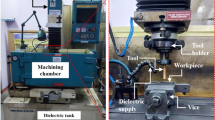Summary
Stainless steel welders (n = 103) were examined. To estimate external exposure, personal air sampling was used. Internal exposure was quantified by the determination of nickel levels in erythrocytes, plasma and urine. Men and women (n = 123) were examined for control purposes. In the plasma and erythrocytes of the controls the nickel concentration was below the level of detection (< 1.81 μg/l). The element concentrations in urine were between < 0.1 and 13.3 μg/l. Of the controls 95% showed nickel levels in urine below 2.2 μg/l (reference value). The average concentration of nickel in the air was 93 ± 81 μg/m3. The average concentration of nickel in the plasma samples was 4.9 ± 4.0 μg/l (95th percentile 12.8 μg/L). In erythrocytes nickel could not be detected. The nickel concentrations in the urine of the welders were 18.5 ± 28.5 μg/l on average (95th percentile 52.5 μg/l). Only a weak correlation between the nickel levels of plasma and urine could be detected (Curine = 2.07 + 8.45 Cplasma; r = 0.294; p < 0.01). Based on our results and on the reported literature a future limit value for the nickel concentration in urine should lay between 30 and 50 μg/l. This value corresponds to an external exposure of 500 μg nickel per cubic metre.
Similar content being viewed by others
References
Aitio A, Tossavainen A, Gustafsson T, Kiilunen M, Haapa K, Jarvisalo J (1985) Urinary excretion of nickel and chromium in workers of a steel foundry. In: Brown SS, Sunderman FW, Jr (eds) Progress in nickel toxicology. Blackwell Scientific Publications, Oxford, pp 149–152
Åkesson B, Skerfving S (1985) Exposure in welding of high nickel alloy. Int Arch Occup Environ Health 56:111–117
Andersen JR, Gammelgaard B, Reimert S (1986) Direct determination of nickel in human plasma by Zeeman-corrected atomic absorption spectrometry. Analyst 111:721–722
Angerer J, Amin W, Heinrich-Ramm R, Szadkowski D, Lehnert G (1987) Occupational chronic exposure to metals. I. Chromium exposure to stainless steel welders — biological monitoring. Int Arch Occup Environ Health 59:503–512
Angerer J, Schaller KH, Fleischer M (1985) Nickel in urine. In: Angerer J, Schaller KH, Henschler D (ed) Analyses of hazardous substances in biological materials, vol 1. German Science Foundation, Weinheim, pp 177–188
Angerer J, Heinrich-Ramm R, Fleischer M, Schaller KH (1988a) Nickel in Blut. In: Henschler D (Hrsg) Analytische Methoden zur Prüfung gesundheitsschädlicher Arbeitsstoffe. Angerer J, Schaller KH, Bd 2. Analysen in biologischem Material. Deutsche Forschungsgemeinschaft, Verlag Chemie, Weinheim [9. Lieferung]
Angerer J, Heinrich-Ramm R, Lehnert G (1988b) Occupational exposure to cobalt and nickel — biological monitoring. 3rd Hans Wolfgang Nürnberg Memorial Workshop on Toxic Metal compounds (Interrelation between Chemistry and Biology), Follonica (Italy) 10–14 April 1988
Bernacki EJ, Parsons GE, Roy BR, Mikac-Devic M, Kennedy CD, Sunderman FW, Jr (1978) Urine nickel concentrations in nickel-exposed workers. Ann Clin Lab Sci 8:184–189
Deutsche Forschungsgemeinschaft (1988) Maximale Arbeitsplatzkonzentrationen und Biologische Arbeitsstofftoleranzwerte. Mitteilung XXIV der Senatskommission zur Prüfung gesundheitsschädlicher Arbeitsstoffe. VCH Verlagsgesellschaft, Weinheim
Drazniowsky M, Parkinson IS, Ward MK, Channon SM, Kerr DNS (1985) A method for determination of nickel in water and serum by flameless atomic absorption spectrophotometry. Clin Chim Acta 145:219–226
Emmerling G, Zschiesche W, Schaller KH, Weltle D, Valentin H (1989) Untersuchungen zur Problematik der Exposition von Lichtbogenschweißern gegenüber Chrom-Nickelhaltigen Rauchen und Stäuben. DVS-Verlag Düsseldorf
Grandjean Ph, Selikoff IJ, Shen SK, Sunderman FW, Jr (1980) Nickel concentrations in plasma and urine of shipyard workers. Am J Ind Med 1:181–189
Grothe I (1985) Mögliches Krebsrisiko beim Lichtbogenschweißen mit chrom- und nickelhaltigen Zusatzwerkstoffen — Technische Aspekte. In: Bolt HM, Piekarski C, Rutenfranz J (Hrsg) Verhandlungen der Deutschen Gesellschaft für Arbeitsmedizin eV, 25. Jahrestagung in Dortmund 1985. Gentner Verlag, Stuttgart, S 41–47
Hauptverband der gewerblichen Berufsgenossenschaften (Hrsg) (1983) Von den Berufsgenossenschaften anerkannte Analysenverfahren zur Feststellung der Konzentration krebserzeugender Arbeitsstoffe in der Luft in Arbeitsbereichen. Carl Heymanns Verlag, Köln, Ausgabe Dezember 1983
Heidermanns G, Wolf D, Hoffmann E (1983) Belastung durch Nickel beim Schleifen und Polieren von Nickellegierungen mit Nickelgehalten unter 80%. Staub — Reinh. Luft 43:374–376
Hogetveit AC, Barton RT, Kostol CO (1978) Plasma nickel as a primary index of exposure in nickel refining. Ann Occup Hyg 21:113–120
Morgan LG, Rouge PJC (1984) Biological monitoring in nickel refinery workers. In: Sunderman FW, Jr (ed) Nickel in the human environment, Lyon, IARC, pp 507–520
Rahkonen E, Junttila M-L, Kalliomäki PL, Olkinouora M, Koponen M, Kalliomäki K (1983) Evaluation of biological monitoring among stainless steel welders. Int Arch Occup Environ Health 52:243–255
Raithel HJ (1987) Untersuchungen zur Belastung und Beanspruchung von 837 beruflichen Nickel-exponierten Personen. Hauptverband der gewerblichen Berufsgenossenschaften e.V. Sankt Augustin, 199 S
Raithel HJ, Mayer P, Schaller KH, Valentin H (1985) Untersuchungen zur internen Nickelexposition in Klein- und Großbetrieben der Hohlglas-Industrie. In: Bolt HM, Piekarski C, Rutenfranz J (Hrsg) Verhandlungen der Deutschen Gesellschaft für Arbeitsmedizin eV, 25. Jahrestagung in Dortmund. Gentner Verlag Stuttgart, S 195–200
Schaller KH, Zober A, Valentin H (1984) External and internal nickel exposure of arc welders during one working week. In: Brown SS, Sunderman FW, Jr (ed) Progress in nickel toxicology. Blackwell Scientific Publications, Oxford, pp 153–156
Stern RM, Berlin A, Fletcher A, Hemminki K, Jarvisola J, Peto J (1986) International conference on health hazards and biological effects of welding fumes and gases. Copenhagen 18–21 February 1985. Int Arch Occup Environ Health 57:237–246
Sunderman FW, Jr, Aitio A, Morgan LG, Norseth T (1986) Biological monitoring of nickel. Toxicol Ind Health 2:17–68
Zober A, Weltle D (1985) Cross-sectional study of respiratory effects of arc welding. J Soc Occup Med 35:79–84
Zober A, Schaller KH, Weltle D (1984) Inhalative Belastung und Beanspruchung von WIG-Schweißern durch Chrom-Nickel-haltige Zusatzwerkstoffe. Staub — Reinh. Loft 44:465–468
Author information
Authors and Affiliations
Rights and permissions
About this article
Cite this article
Angerer, J., Lehnert, G. Occupational chronic exposure to metals. Int Arch Occup Environ Health 62, 7–10 (1990). https://doi.org/10.1007/BF00397842
Received:
Accepted:
Issue Date:
DOI: https://doi.org/10.1007/BF00397842




